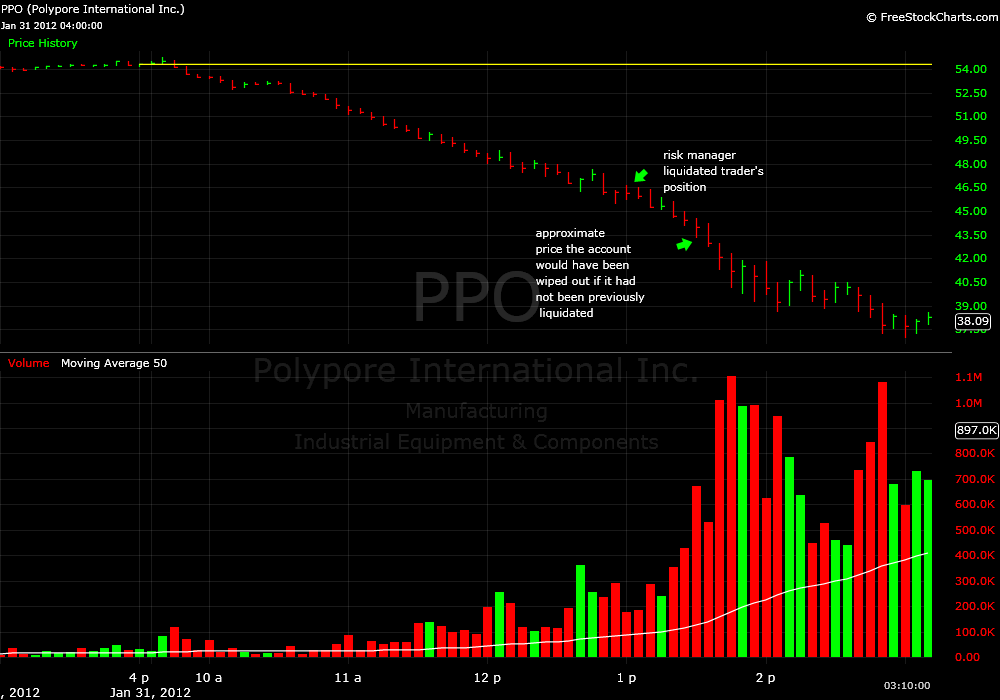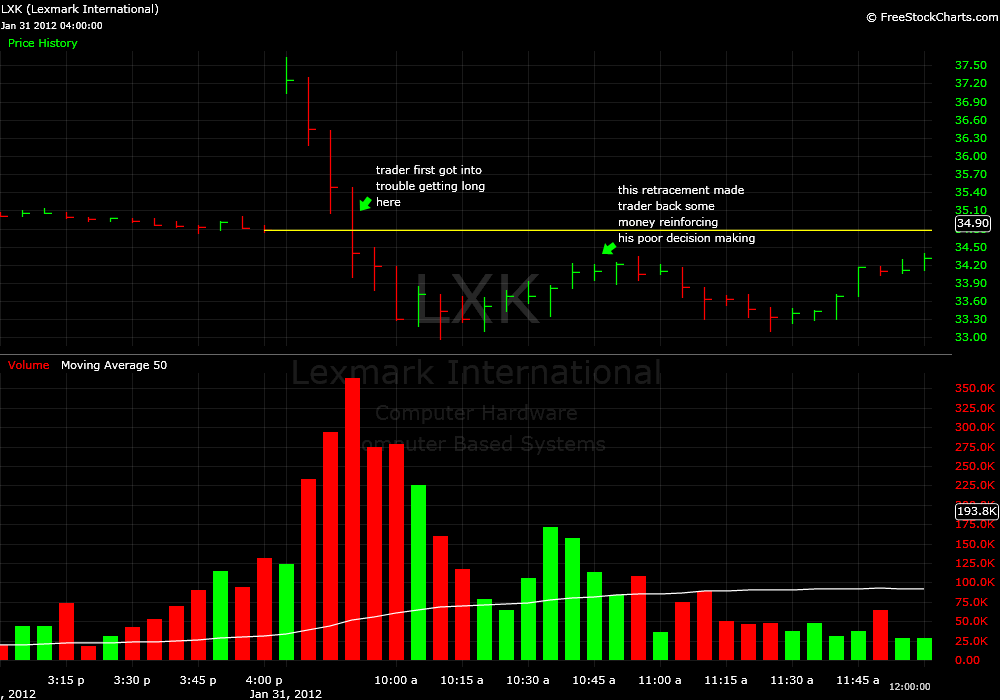As someone who has been in the trading industry for over 15 years I am familiar with many traders and firms that have “blown up” over the years. The most recent public example of this was MF Global. Billions wagered on Sovereign European debt brought MF to bankruptcy. Probably the most famous blowup of all time was LTCM, which was levered up to 100X on seemingly safe government securities. On a personal level I have seen former trading friends and colleagues blowup losing hundreds of thousands or a few million dollars in a very short period of time.
My experience has shown me that almost all of these blowups were preventable. These massive losses generally stem from the arrogance of individual traders or the faulty oversight of risk managers that in turn lead to traders or firms losing more capital than they can withstand. Obviously the amount of losses that would shut down an individual’s trading career versus a large Wall Street entity are vastly different but each can only be prevented by a consider the risk first mentality.
We spend quite a bit of time with trainees explaining the risk of individual trades based on the volatility of a stock or the spread. We also have a lecture that discusses macro type risks such as government investigations or FDA “no action” letters. As a trader the most dreaded risk is the trading “halt”. This occurs when according to the particular Exchange where a security trades that a pause in trading activity will lead to a more orderly market. During a halt there is no way for a trader to get out of their position. They are at the mercy of the price the security is trading when the Exchange allows trading activity to resume.
I remember many years ago when I traded at a firm that would allow traders to “cross” their positions in the event of a halt. This meant if Trader A at the firm was long the halted stock and Trader B was short the firm would allow the traders to cancel each other out and thus remove the gap risk of when the stock resumed trading. Traders who truly considered “risk first” would cross their position with another trader even if they felt it was more likely they were on the right side of the trading halt.
This morning I noticed on the risk monitor that a firm trader was down a significant sum of money for his level of experience. He was down roughly 10% of the equity in his account. This was the third day in a row his results were more volatile than usual. Outsized swings in a trader’s PnL over a short period of time is fairly predictive of much larger losses on the horizon. So I sent this trader an email (he trades remotely) with some risk management suggestions around 10:30AM. I figured he would read the email and implement my suggestions and hopefully be on his way back to trading profitably (I tend to be the optimist :).
Here is a chart of the stock that first got him into trouble this morning. He was trading it long. I believe it was #1 on the SMB Radar “weak today” list at the time.
Then at 1:00PM I checked back in with the risk manager to see how traders were performing (thank G-d we have risk managers that track this stuff all day as it would drive me insane) and noticed that the trader’s losses had increased by 200%. His account had now lost around 30% of its equity. In the next few minutes the risk manager flattened out his positions and removed his buying power thus preventing him from opening any new positions.
I received a pleasant email from the trader after his position was liquidated exclaiming there was nothing wrong with his getting long PPO at 47.50 as it represented a good buy. His comment seemed to be the byproduct of emotion rather than logic but who knows. Ninety minutes later PPO was 10 points lower and I’m assuming a great buy! So the actions of the risk manager extended this trader’s short career for at least one more day. I’ll keep you posted.
Steven Spencer is the co-founder of SMB Capital and SMB Training and has traded professionally for over 15 years. His email is [email protected].
No relevant positions
*live trades discussed in this post took place in T3 Trading Group, LLC a CBSX broker dealer




3 Comments on “The Blowup”
Good post – needs to be reiterated at times to many probably (would have helped me years ago immensely). I don’t know what a “good buy” is anymore. Can’t define something where the definition changes daily.
A recent quote from another excellent trading blog…
“If you find yourself always wanting to fade the trend, you probably need to make some changes to your thought process or you are likely in for a short and painful career as a trader.”
There is “investing capital” and there is “play money”: investing money should be based on fundamentals and technical indicators; play money is money you can afford to lose and you use it to feed the “I’m smarter than everyone else” feeling inside. My play $1K money has grown to about $2,500 and back down to around $600 and back again over the years – and keeps my investing money VERY safe! I think every investor should have some play money to help fight the fear/greed forces inside our heads.